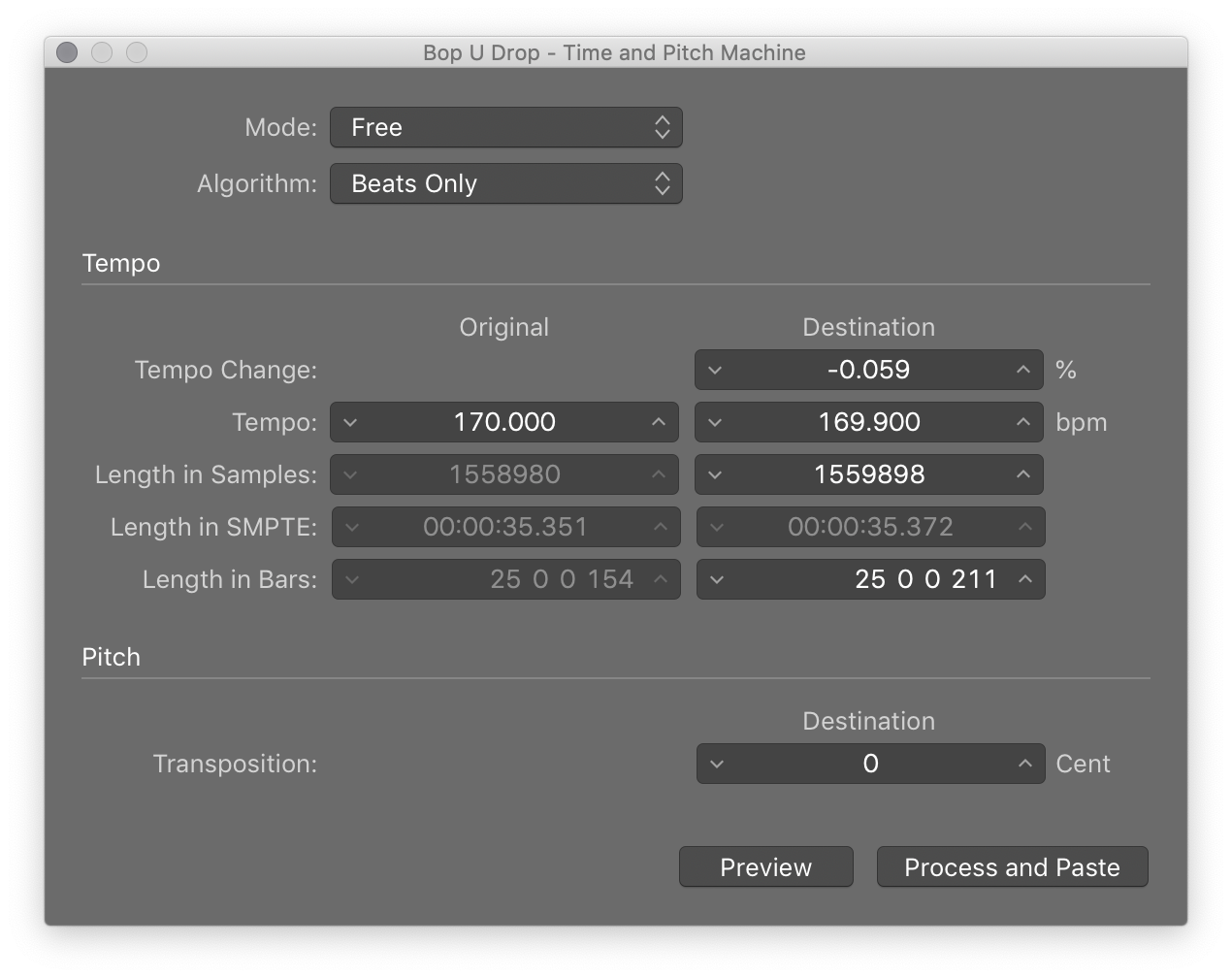#LogicProX @StudioIntern1
Time and Pitch Machine… ⌃P
The entirety of information about the Sample Editor has been removed from Logic Pro X documentation. I guess they thought that no one edits audio anymore.
I am very slow in my reading of the Logic Pro 9 manual(s), having only reached the “Basic Operations” chapter where I am at “Working with Help Tags”. It’s a long slog.
Logic Pro 9 User Manual: Editing Audio in the Sample Editor
You can use the Arrange area or the Sample Editor to make incredibly fine adjustments to audio files. In this chapter you will see why the Sample Editor is the ideal tool for removing pops and clicks in audio material, setting accurate crossover points for looped playback, correcting phase cancelation errors, and much more.
You will also take a look at transient markers, which denote significant points—or transients—in an audio file. The audio on a track is analyzed for transients the first time you enable that track for Flex Time editing. Any detected transients in the file are marked with transient markers.
Finally, you will learn about some audio processing tools—collectively known as the Digital Factory—that are unique to the Sample Editor. These include time stretching and pitch shifting, audio quantization, and extraction of pitch and rhythmic information from audio—which can be applied to other audio or MIDI parts.
Logic Pro 9 User Manual: Using the Sample Editor’s “Time and Pitch Machine”
You can use the “Time and Pitch Machine” to radically alter the time structure of audio files, including time compression or expansion, and pitch transposition. When changing the pitch, you can also correct any alteration of the formants—the vocal characteristics of the pitch-shifted audio. Pitch shifting without formant correction causes a phenomenon commonly known as the Mickey Mouse effect.
⇧ SHIFT – ⌃ CONTROL – ⌥ OPTION – ⌘ COMMAND
